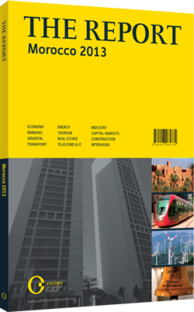Groupe Banque Populaire: Banking
DEVELOPMENT STRATEGY: At the local level, the group is contemplating pursuing a strategy of reinforcement. The bank’s development plan provides for a sustained increase in branch openings, with an average of 100 new locations each year. Additionally, the bank would strengthen the market position of specialised financial subsidiaries, mainly Vivalis and Maroc Leasing – the Moroccan market leader of leasing products – with a target market share of 26.4% by 2014.
On the international front, BCP will continue to reinforce the market position of Chaabi Bank in Europe, dedicated to Moroccans living abroad, as well as continue to reinforce the network of the two small African subsidiaries, Banque Populaire Maroco-Guinéene and Banque Populaire Maroco-Centrafricaine, present in Guinea and the Central African Republic, respectively.
Since 2011 BCP has shown a strong willingness to expand in Africa, as the contribution of its foreign activities is still marginal (3.8% of the group’s net income shares) while the bank’s peers or competitors benefit greatly from foreign activities, as these are strong growth drivers. Thus, the second half of 2012 was marked by the acquisition of seven banks in the Economic Community of West African States, through a common holding with Atlantique Finance Group.
This acquisition is modest, at less than 5% of total BCP’s assets. BCP’s shareholder base structure has changed greatly over the first half of 2012, including two capital increases of Dh1.6bn (€142m) and Dh1.7bn (€151m), reserved for SFI and Banque Populaire-Caisse d’Épargne Maroc, respectively, corresponding to an acquisition of 5% for each. This was followed by the sale of a 10% government stake in BCP to the BPRs. Thus, the bank increased its foreign institutional stake to 10% and it intends to bring it to 15%; a new entrant to the capital is expected soon. From 2013 to 2015, a 6% elevation in the average annual growth rate of non-binding indications and an 8% rise for the operating income on the basis of an average cost-to-income ratio of around 45.4% and a cost of risk of 0.5% are predicted.
THE COMPANY: The Groupe Banque Populaire (GBP) is a Moroccan cooperative bank with a unique organisation. The group’s structure consists of 10 regional mutual banks (banques populaires régionales, BPRs), the Banque Centrale Populaire (BCP – the group’s central body listed on the stock exchange), specialised subsidiaries (the most significant being Vivalis, a consumer credit subsidiary, Maroc Leasing and Upline Group, a brokerage subsidiary), public foundations dedicated to microcredit, as well as banks and representation overseas. The company is the leader of deposit collection with a market share of 28.5% at the end of the first half of 2012, thanks to a large network of 1065 branches, as well as a market share of 53% in terms of deposits by Moroccans living abroad. With a 23.6% market share in terms of loans granted, the bank is ranked second behind Attijariwafa Bank. GBP employs 11,206 people and has evolved in all client segments: large corporations, small and medium-sized enterprises, professionals and individuals, both residents and Moroccans living abroad. In the first half of 2012, ratings agency Standard & Poor’s reaffirmed its confidence in the group when it attributed an investment grade of BBB-/stable/A-3, with a stable perspective. Although the Moroccan banking sector is still subject to a slowdown, GBP has continued to show good fundamentals. In this period of pressure on bank liquidity, the bank’s strong deposit structure provides it with a significant competitive edge, particularly given that 63% of total deposits are non-interest bearing. The group also has one of the soundest financial structures in the sector, with equity totalling Dh30.2bn (€2.7bn), giving it one of the highest capital adequacy ratios (13.3% at the end of June 2012). However, despite the bank’s sustained operational performance (19% increase in gross operating income in the first half of 2012), the surge in the cost of risk triggered by the worsening economic situation lowered the bank’s return on equity to 10% (versus 12% for the sector overall).
You have reached the limit of premium articles you can view for free.
Choose from the options below to purchase print or digital editions of our Reports. You can also purchase a website subscription giving you unlimited access to all of our Reports online for 12 months.
If you have already purchased this Report or have a website subscription, please login to continue.

